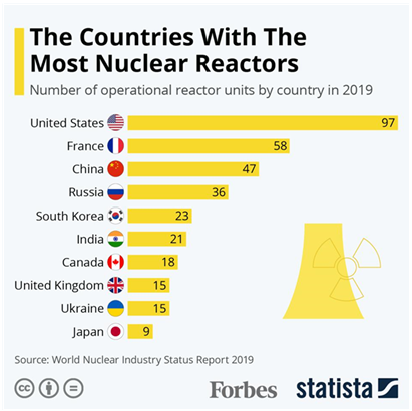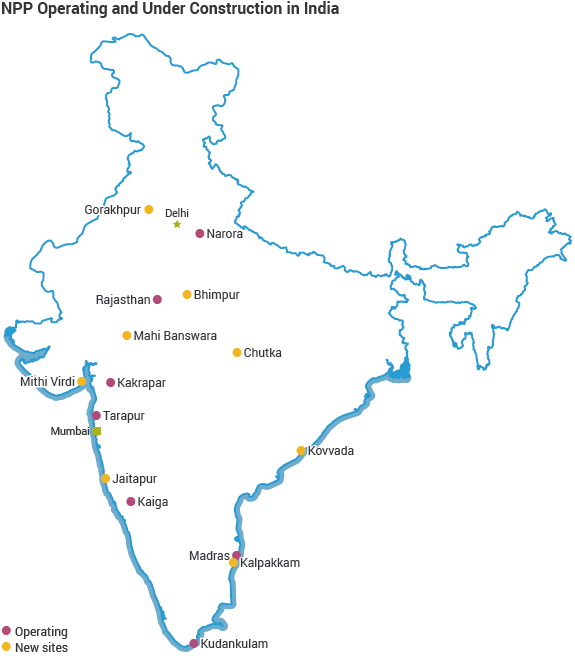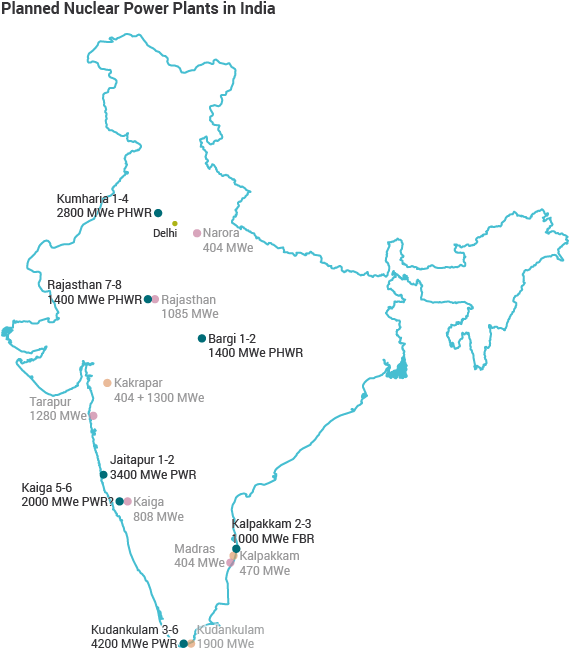Context:
Critical component for Kudankulam nuclear reactor tested successfully.
Relevance:
GS-III: Industry and Infrastructure
Dimensions of the Article:
- Kudankulam Nuclear Power Plant
- Nuclear power by country
- Nuclear Power Plants in India
- India’s Nuclear Energy Program: Three-Stage Programme
Kudankulam Nuclear Power Plant
- KKNPP is the single largest nuclear power station in India.
- It is situated in Koodankulam in the Tirunelveli district of Tamil Nadu.
- It is scheduled to have six VVER-1000 reactors with an installed capacity of 6,000 MW of electricity.
- It has been built in collaboration with Atomstroyexport, the Russian state company and NPCIL.
Nuclear power by country
- Nuclear power plants currently operate in 30 countries.
- Most are in Europe, North America, East Asia and South Asia.
- The United States is the largest producer of nuclear power, while France has the largest share of electricity generated by nuclear power.
- France, Slovakia, Ukraine, and Hungary use them as the source for a majority of the country’s electricity supply as of 2019.
- China has the fastest growing nuclear power program with 11 new reactors under construction, and a considerable number of new reactors are also being built in India, Russia and South Korea.
- Pakistan plans on constructing three to four nuclear power plants by 2030.
- At the same time, at least 100 older and smaller reactors will “most probably be closed over the next 10–15 years”.
- Some countries operated nuclear reactors in the past but have currently no operating nuclear plants.
- Among them, Italy closed all of its nuclear stations by 1990 and nuclear power has since been discontinued because of the 1987 referendums on which Italians voted.
- Several countries are currently operating nuclear power plants but are planning a nuclear power phase-out.

Nuclear Power Plants in India
- Presently, India has 22 operating nuclear power reactors, with an installed capacity of 6780 MegaWatt electric (MWe). Among these eighteen reactors are Pressurised Heavy Water Reactors (PHWRs) and four are Light Water Reactors (LWRs).
- Nuclear Power is the fifth-largest source of generating electricity in India after coal, gas, wind power, and hydroelectricity.
- The domestic uranium reserve in India is small and the country is dependent on uranium imports from other countries to provide fuel to its nuclear power industry. Since the 1990s, Russia has been a major supplier of nuclear fuel to India.
- The nuclear energy programme in India was launched around the time of independence under the leadership of Homi J Bhabha.
- Prototype Fast Breeder Reactor (PFBR) is being implemented by the Bharatiya Nabhikiya Vidyut Nigam Limited (BHAVINI), a wholly owned Enterprise of the Government of India under the administrative control of the Department of Atomic Energy (DAE).
India’s Nuclear Energy Program: Three-Stage Programme
Stage one
- Pressurized Heavy Water Reactor uses Natural UO2 as fuel matrix, Heavy water as moderator and coolant.
- In the reactor, the first two plants were of boiling water reactors based on imported technology.
- Subsequent plants are of PHWR type through indigenous R&D efforts.
- India achieved complete self- reliance in this technology and this stage of the programme is in the industrial domain.
- The future plan includes the setting up of VVER type i.e. Russian version of the Pressurized Water Reactor (PWR) is under progress to augment power generation.
- MOX fuel (Mixed oxide) is developed and introduced at Tarapur to conserve fuel and to develop new fuel technology.
Second stage
- Second stage of nuclear power generation envisages the use of Pu-239 obtained from the first stage reactor operation, as the fuel core in fast breeder reactors (FBR).
Third stage
- Third phase of India’s Nuclear Power Generation programme is, breeder reactors using U-233 fuel.
- India’s vast thorium deposits permit design and operation of U-233 fueled breeder reactors.
-Source: The Hindu







